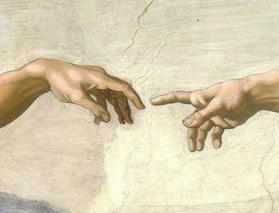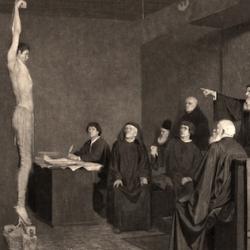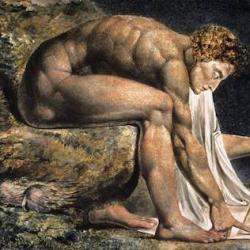Though not so well-known as the debates over Darwinism, battles over the theological and cosmological import of the second law of thermodynamics played a large role in scientific and religious debates between 1870 and 1910.
The debate was carried on partly by long-forgotten figures, but according to Helge Kragh’s 2008 Entropic Creation, it also engaged some of the leading minds of the age: “James Clerk Maxwell, William Thomson, Hermann von Helmholtz, Ernst Mach, Pierre Duhem, Ludwig Boltzmann, Ernst Haeckel, Svante Arrhenius, Herbert Spencer, Friedrich Engels, Friedrich Nietzsche, Charles Sanders Peirce, Franz Brentano, William Stanley Jevons and Henri Bergson” (3).
Kragh touches on the theory of “thermal apocalypse” sparked by the formulation of the notion of entropy”: Known as “heat death,” this theory predicted “that the world will eventually and inevitably ‘melt away,’ come to a final end where all energy is transformed into the form of mechanically useless heat” (1).
But Kragh is more interested in the way the second law was turned into a defense of either a finite universe or of divine creation: “given that we do not live in a high-entropic world, and assuming that the entropy law is valid for the universe at large, entropy can only have increased for a finite period of time. If this is the case, the universe must have had a beginning of a sort – and if it had a beginning it presumably originated in a creative act. This is the essence of the ‘entropic creation argument’, which is the central theme of my investigation. Thus, thermodynamics leads to predictions concerning not only the end of the world, but also its beginning, and for this reason it enters domains that traditionally belong to religion. No wonder, then, that the second law of thermodynamics became a major battlefield in the heated ideological discussions of the late nineteenth century” (1).
The debate threw up some intriguingly eccentric theories. Peirce believed that the world evolved from chaos to eventual complete and fixed order, but that along the way “we have on our side a state of things in which there is some absolute spontaneity counter to all law, and some degree of conformity to law” (quoted p. 187). This inversion of the second law implied that the laws of the universe varied with time. Though it had potential for resolving some of the puzzles of the second law, it was rejected by most scientists, who assumed the fixity of nature’s laws.
Bergson “supported some version of the second law, at least as being valid for the solar system, he also believed that life-phenomena were exceptions governed by ‘ectropy,’ a kind of anti-entropy or chaos-to-order principle. He refrained from accepting a truly universal heat death, as predicted from an extension of the second law to the entire universe. In Bergson’s view, nature was a kind of organic whole driven by a non-physical, indeterministic life force, an élan vital. ‘The universe is not made, it is being made continually.’315 This formula may be seen to be in harmony with the theological concept of creatio continuans, but Bergson refrained from making a connection. He was aware of the contrast between his vitalistic view and the second law, but suggested that life, in a generalized sense, must have priority over thermodynamics” (190-1).















